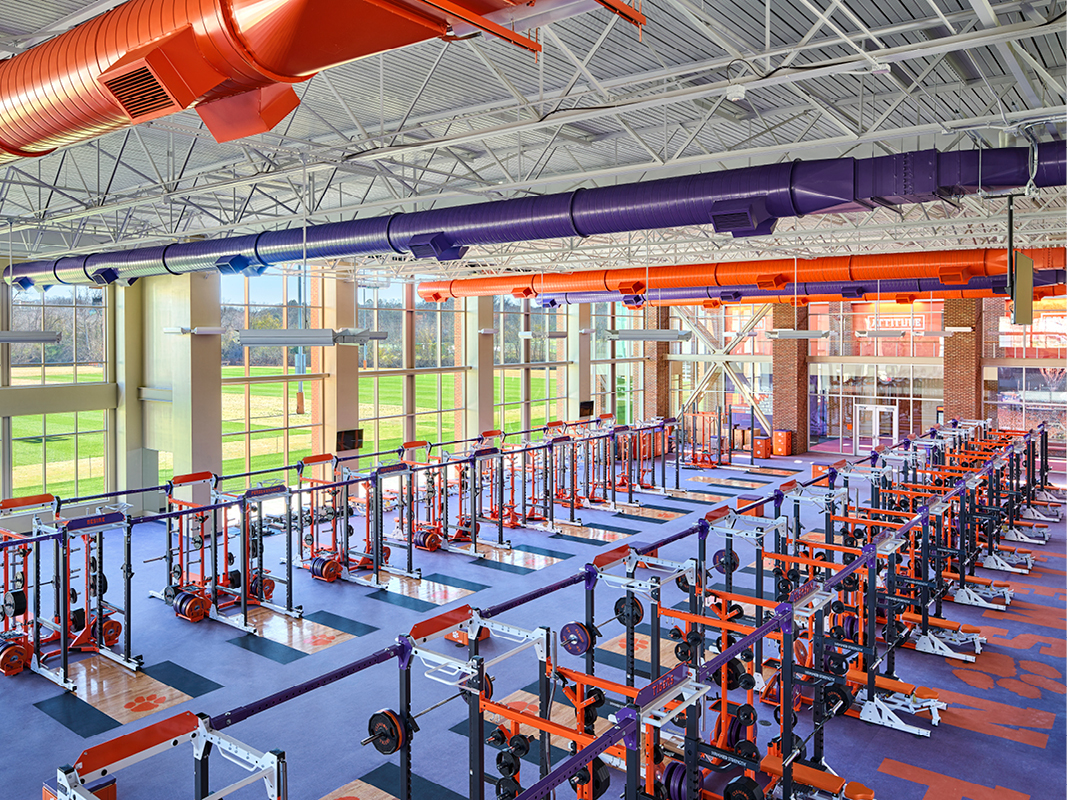
Yann Cowart, GMC’s Vice President of Sports Architecture, was recently published in Athletic Business about college football performance centers and their importance when it comes to recruitment and retention of student athletes.
Excerpted from Athletic Business
In a university’s’ history, sporting events and games are what mark time. College sports touch the lives of so many people, they have a history of being a critical part of university life. While academicians rightfully see that the university as having a higher purpose, if elite athletic programs at the traditional Power Five level ceased to exist, the complexion and support of the university could be affected.
Across industries, there may be no bigger recruitment and retention arms race than collegiate football. In this digital age, streaming rights and content needs are among the business decisions that are likely to make the zone of influence even more substantial in coming years. The ability of a collegiate sports program to respond, enhancing recruitment and retention targets, will be a significant factor in its longevity. On average, universities spent $1,072,673.29 on recruiting in 2019 according to data compiled by AthleticDirectorU.
Recruitment and Retention
An active field. As universities increasingly compete to secure premium athletes, likeness and name compensation will likely become reality over the next few years. For facility design going forward, intense focus will be placed on attracting promising high-schoolers and retaining existing athletes. Amenities are particularly emphasized, even when athletes don’t necessarily need them to perform well. At some universities, programming includes space for helping athletes to manage their future professional aspirations, be it in sports or other professions.
Interactive practice simulation. Memory motion is now considered to be a much better tool for training the body than films presented in a classroom setting. Football field-width, high-volume meeting rooms offer the ability to review game footage and engage with real-time walkthrough of plays. Heavy technology infrastructure is required for this kind of footage to be projected on a surround, IMAX type screen.
Support space and a strong AV system are also needed for simulation, sound, and even crowd noise. Located next to classrooms and meeting rooms, as well as near outdoor practice fields, these spaces are designed for easy access. Currently an NFL phenomenon, these spaces are attractive from both a recruiting and retention standpoint, as it is the ultimate goal of Division 1 athletes to advance their professional opportunities.

Yann Cowart‚ AIA, LEED AP, serves as GMC’s Vice President of Sports. As an architect and former Auburn University football player, he brings a unique perspective to athletic design. This, along with more than 15 years of developing collegiate sports design, has kept him abreast of current trends in a fast-changing design market. Click here to contact Yann for more information about GMC Sports.